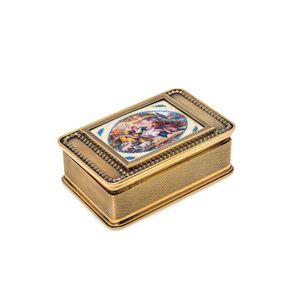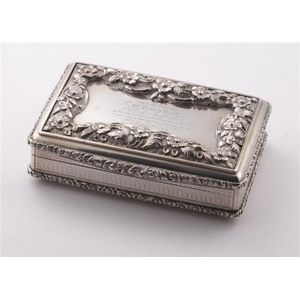Georgian Anglo-Indian Cribbage Box, Ebony and Bone
You must be a subscriber, and be logged in to view price and dealer details.
Subscribe Now to view actual auction price for this item
When you subscribe, you have the option of setting the currency in which to display prices to $Au, $US, $NZ or Stg.
- Circa - A Latin term meaning 'about', often used in the antique trade to give an approximate date for the piece, usually considered to be five years on either side of the circa year. Thus, circa 1900 means the piece was made about 1900, probably between 1895 and 1905. The expression is sometimes abbreviated to c.1900.
- Georgian - As an English stylistic period, Georgian is usually taken to cover the period from George I (1714) to the Regency of Prince George (1811-20), although the period from 1800 to 1830 is sometimes designated as the Regency period. During the Georgian period the great English cabinetmakers and designers such as Chippendale, Hepplewhite, Adam Sheraton etc., were all active.
Therefore there isn't a single 'Georgian style' as such and to say something is 'Georgian', usually means it was made between 1714 and 1830. This assumes we discount George V and George VI, both being from the 20th century.
The styles popular at the time of each reign were:
George I (1714-1727) saw out the last years of the Baroque period.
George II (1727-1760) reigned during the Rococo period.
George III (1760-1820) saw the last gasp of the Rococo, all of the early Neo-Classic 'Adam style' and most of the later neo-Classic 'Regency style'.
George IV (Prince Regent 1820-1830)encompassed the last of the 'Regency' style.
William IV's reign (1830-1837) was something of a no man's land (stylistically) and he wasn't a 'George' anyway. He covered the last glimmerings of 'Regency' and the start of the 'Victorian' style. - Ebony - Ebony is a close grained timber, black in colour. It has a fine texture which can be polished to a high gloss, making it suitable for venereering, inlay and stringing and its use as solid timber is resticted to small decorative items and ornamental decoration, such as chess pieces and musical instrument parts. The term "ebonised" means "faux ebony", timber that has been darkened during the polishing process to resemble ebony.
- Sandalwood - Sandalwood is a heavy, yellow coloured and very fine-grained timber, which has a fragrance which lasts for many decades, and acts as a deterent to moths and insects.
In the British colonial era, sandalwood was imported into Britain from India, and the wood also used within India for the manufacture of Anglo-Indian furniture.
Becasue it does not have a distinct grain pattern, sandalwood was not used for the exterior surfaces of furniture, but was put to use for drawer and box linings, where the aroma was noticeable one the object was opened. it was also used to manufacture small objects (treen).
Nowadays sandalwood is commercially grown with Australia the largest producer. As well as producing timber, oil is extracted for use in the manufacture of perfumes.
This item has been included into following indexes:
Visually similar items

19th century Vizigapatam ivory Workbox sarcophagus shape, the interior with numerous ivory lidded sections

A silver gilt hinged jewel box, with applied enamel panel, hallmarked 925 Sterling, maker EB, 3 cm high, 9 cm wide, 6 cm deep

A cigarette lighter, Cartier. Gold plated. Length 7 cm. Signed and numbered 726871. Original box and papers.

An important early table snuff box, Frances Clark, Birmingham 1839. Inscribed 'Presented to Mr Henry Rees of the Royal Australia Corps By the Inhabitants of Newcastle, New South Wales on His Departure From That District, 29th August 1842.' 215g, 9 x 6 x 3
